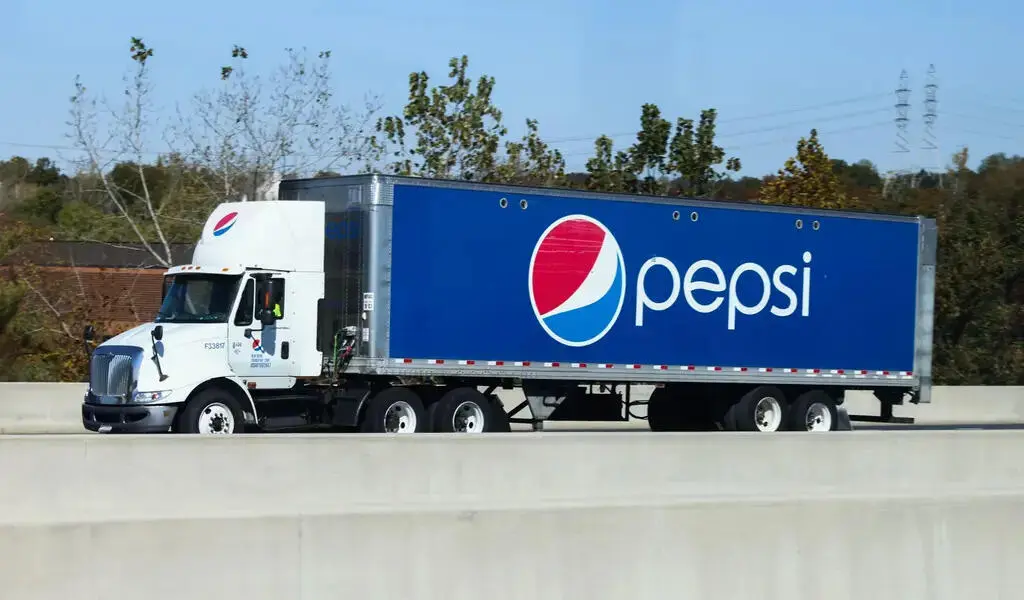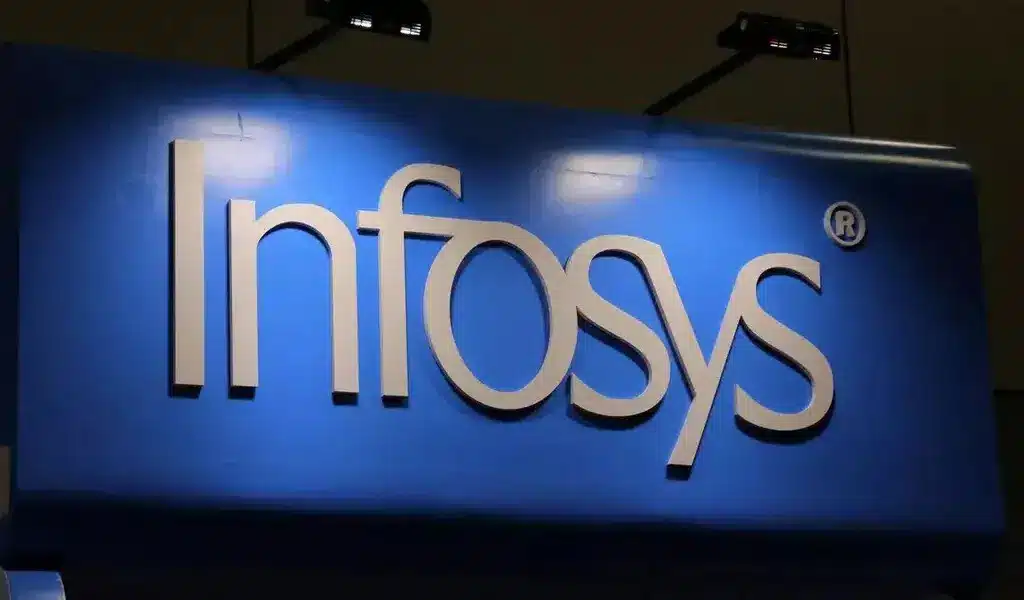Business
Outsourced Product Development: Unlocking the Power of Collaboration

Discover how outsourced product development services and engineering can boost your business. Unleash the power of collaboration and innovation.
In today’s fast-paced and competitive business landscape, organizations are constantly seeking ways to innovate and bring new products to the market efficiently. One strategy that has gained significant traction is product development outsourcing. By partnering with external experts, businesses can unlock the power of collaboration and drive innovation to new heights.
In this article, we will delve into the world of outsourced product development, exploring its potential benefits and how it can be harnessed to propel businesses forward.
What is Outsourced Product Development?
Outsourced product development, commonly known as OPD, is a business strategy where companies collaborate with external service providers to design, develop, and manufacture products. This approach allows businesses to tap into the expertise and specialized skills of external teams, thereby accelerating the product development process and reducing time-to-market. Whether it’s software development, hardware products, or integrated solutions, OPD provides a unique opportunity to leverage diverse perspectives and knowledge.
Advantages of Product Development Outsourcing
Outsourced product development offers several key advantages that can transform the way companies innovate and grow:
- Cost Efficiency: OPD enables companies to access skilled talent without the need for large internal teams, saving on operational costs.
- Focus on Core Competencies: By outsourcing product development tasks, companies can focus on their core competencies, driving overall efficiency.
- Accelerated Time-to-Market: Collaborating with experienced partners speeds up the development cycle, helping businesses reach the market faster.
- Access to Specialized Skills: External service providers bring specialized skills and domain expertise that may not be available internally.
- Global Market Reach: OPD allows companies to expand their global reach by leveraging the partner’s international presence and market knowledge.
Choosing the Right Outsourced Product Development Partner
Selecting the right partner for product development outsourcing is critical to the success of the project. Consider the following factors when making your decision:
- Expertise and Experience: Evaluate the partner’s track record, domain expertise, and relevant experience in your industry.
- Communication and Collaboration: Ensure effective communication channels are established to foster seamless collaboration.
- Cultural Compatibility: Cultural alignment between both organizations fosters better understanding and collaboration.
- Quality Assurance: Check for the partner’s quality assurance practices to ensure top-notch deliverables.
- Data Security and Intellectual Property Protection: Prioritize partners with robust data security and IP protection measures.
How to Effectively Collaborate in Product Development
Successful collaboration is the cornerstone of effective product development outsourcing. Here are some tips to foster a collaborative environment:
- Open Communication: Establish clear and transparent communication channels to share ideas and progress updates.
- Regular Meetings: Schedule regular meetings to discuss project milestones, challenges, and progress.
- Defined Roles and Responsibilities: Clearly define roles and responsibilities to avoid confusion and ensure accountability.
- Feedback and Iteration: Embrace feedback and iterate on designs to continuously improve the product.
- Leveraging Tools and Technologies: Utilize collaborative software tools to streamline project management and communication.
Key Considerations for Successful
To ensure the success of an outsourced product development project, businesses should focus on the following key considerations:
- Defined Objectives and Scope: Clearly outline project objectives, scope, and deliverables to set the right direction.
- Flexibility: Allow room for flexibility in the development process to adapt to evolving market demands.
- Risk Management: Identify potential risks and develop contingency plans to mitigate disruptions.
- Sustainable Development: Embrace sustainable practices throughout the product development lifecycle.
- User-Centric Approach: Prioritize user needs and preferences to deliver products that resonate with the target audience.
The Role of Communication
Effective communication is paramount to the success of outsourced product development projects. It facilitates:
- Understanding Client Requirements: Clear communication helps external teams grasp project requirements accurately.
- Real-Time Issue Resolution: Prompt communication enables swift issue resolution, avoiding delays.
- Alignment with Project Goals: Regular updates ensure all stakeholders remain aligned with project objectives.
- Building Trust and Collaboration: Transparent communication fosters trust and enhances collaboration.
Mitigating Risks
While product development outsourcing offers numerous benefits, it also comes with inherent risks. To mitigate these risks:
- Thorough Due Diligence: Conduct thorough background checks on potential partners to ensure reliability.
- Effective Contractual Agreements: Draft comprehensive contracts that clearly outline responsibilities, deadlines, and penalties.
- Regular Performance Assessment: Continuously assess the partner’s performance to identify and address issues promptly.
- Crisis Management Plan: Develop a crisis management plan to tackle unexpected challenges effectively.
- Quality Assurance and Testing: Implement robust quality assurance and testing procedures to maintain product excellence.
Outsourced Product Engineering: Building for Success
Outsourced product engineering involves the end-to-end development and engineering of products by external teams. It includes:
- Conceptualization and Design: Ideating and creating product design prototypes.
- Development and Testing: Implementing the design and rigorously testing the product.
- Manufacturing and Production: Scaling the product for mass manufacturing and market launch.
- Continuous Improvement: Iterating on the product based on user feedback and market demands.
Leveraging Technology Trends in Product Development Outsourcing
To stay ahead in the dynamic market, businesses should capitalize on emerging technology trends, such as:
- Internet of Things (IoT): Integrate IoT capabilities for smart and connected products.
- Artificial Intelligence (AI): Leverage AI to enhance product functionality and user experience.
- Blockchain: Implement blockchain for secure and transparent supply chain management.
- Data Analytics: Utilize data analytics to gain insights and make informed product decisions.
The Future of Outsourced Product Development
The future of product development outsourcing looks promising, with the following trends shaping the landscape:
- Evolving Ecosystems: Collaborative ecosystems will continue to grow, fostering innovation.
- Sustainability Focus: Businesses will prioritize sustainability in product development and sourcing.
- Embracing AI and Automation: AI and automation will revolutionize product development processes.
- Customization and Personalization: Consumer demands for personalized products will drive customization.
Challenges and Solutions
While OPD offers numerous advantages, it is not without its challenges:
- Cultural Differences: Cultural gaps can lead to miscommunication and delays. Foster cultural understanding through regular interactions.
- Time Zone Differences: Address time zone disparities by scheduling overlapping work hours and using asynchronous communication tools.
- Intellectual Property Concerns: Address IP concerns with robust legal agreements and data security measures.
Balancing Cost and Quality
Achieving a balance between cost and quality is vital in outsourced product development:
- Focus on Value: Prioritize the value delivered rather than solely focusing on cost reduction.
- Long-term Partnerships: Forge long-term partnerships with OPD providers to build mutual trust and enhance quality over time.
Ethics and Social Responsibility
Ethics and social responsibility should guide every aspect of OPD:
- Fair Labor Practices: Ensure the well-being of workers involved in product development.
- Environment-Friendly Practices: Embrace sustainable practices to minimize environmental impact.
- Community Engagement: Engage with local communities to foster positive social impact.
Conclusion: Embrace the Collaborative Power of OPD
Outsourced Product Development has emerged as a game-changer for businesses seeking innovation and growth. By embracing collaboration and tapping into the expertise of external partners, companies can unleash their full potential and unlock unprecedented success. To thrive in a rapidly evolving market, businesses must adapt to changing trends, prioritize sustainability, and put user needs at the heart of product development. Embrace the power of OPD and embark on a journey of transformation.
Business
PepsiCo Reduces Revenue Projections As North American Snacks And Key International Markets Underperform.

(VOR News) – In the third quarter of this year, Pepsi’s net income was $2.93 billion, which is equivalent to $2.13 per share. This was attributed to the company.
This is in stark contrast to net income of $3.09 billion, which is equivalent to $2.24 per share, during the same period in the previous year. The company’s earnings per share were $2.31 when expenses were excluded.
Net sales decreased by 0.6%, totaling $23.32 billion. Organic sales increased by 1.3% during the quarter when the effects of acquisitions, divestitures, and currency changes are excluded.
Pepsi’s beverage sales fell this quarter.
The most recent report indicates that the beverage and food sectors of the organization experienced a 2% decline in volume. Consumers of all income levels are demonstrating a change in their purchasing habits, as indicated by CEOs’ statements from the previous quarter.
Pepsi’s entire volume was adversely affected by the lackluster demand they encountered in North America. An increasing number of Americans are becoming more frugal, reducing the number of snacks they ingest, and reducing the number of times they purchase at convenience stores.
Furthermore, Laguarta observed that the increase in sales was partially attributed to the election that occurred in Mexico during the month of June.
The most significant decrease in volume was experienced by Quaker Foods North America, which was 13%. In December, the company announced its initial recall in response to a potential salmonella infection.
Due to the probability of an illness, the recall was extended in January. Pepsi officially closed a plant that was implicated in the recalls in June, despite the fact that manufacturing had already been halted.
Jamie Caulfield, the Chief Financial Officer of Pepsi and Laguarta, has indicated that the recalls are beginning to have a lessening effect.
Frito-Lay experienced a 1.5% decline in volume in North America. The company has been striving to improve the value it offers to consumers and the accessibility of its snack line, which includes SunChips, Cheetos, and Stacy’s pita chips, in the retail establishments where it is sold.
Despite the fact that the category as a whole has slowed down in comparison to the results of previous years, the level of activity within the division is progressively increasing.
Pepsi executives issued a statement in which they stated that “Salty and savory snacks have underperformed year-to-date after outperforming packaged food categories in previous years.”
Pepsi will spend more on Doritos and Tostitos in the fall and winter before football season.
The company is currently promoting incentive packets for Tostitos and Ruffles, which contain twenty percent more chips than the standard package.
Pepsi is expanding its product line in order to more effectively target individuals who are health-conscious. The business announced its intention to acquire Siete Foods for a total of $1.2 billion approximately one week ago. The restaurant serves Mexican-American cuisine, which is typically modified to meet the dietary needs of a diverse clientele.
The beverage segment of Pepsi in North America experienced a three percent decrease in volume. Despite the fact that the demand for energy drinks, such as Pepsi’s Rockstar, has decreased as a result of consumers visiting convenience stores, the sales of well-known brands such as Gatorade and Pepsi have seen an increase throughout the quarter.
Laguarta expressed his opinion to the analysts during the company’s conference call, asserting, “I am of the opinion that it is a component of the economic cycle that we are currently experiencing, and that it will reverse itself in the future, once consumers feel better.”
Additionally, it has been noted that the food and beverage markets of South Asia, the Middle East, Latin America, and Africa have experienced a decline in sales volume. The company cut its forecast for organic revenue for the entire year on Tuesday due to the business’s second consecutive quarter of lower-than-anticipated sales.
The company’s performance during the quarter was adversely affected by the Quaker Foods North America recalls, the decrease in demand in the United States, and the interruptions that occurred in specific international markets, as per the statements made by Chief Executive Officer Ramon Laguarta.
Pepsi has revised its forecast for organic sales in 2024, shifting from a 4% growth rate to a low single-digit growth rate. The company reiterated its expectation that the core constant currency profitability per share will increase by a minimum of 8% in comparison to the previous year.
The company’s shares declined by less than one percent during premarket trading. The following discrepancies between the company’s report and the projections of Wall Street were identified by LSEG in a survey of analysts:
SOURCE: CNBC
SEE ALSO:
Old National Bank And Infosys Broaden Their Strategic Partnership.
Business
Old National Bank And Infosys Broaden Their Strategic Partnership.

(VOR News) – Old National Bank, a commercial bank with its headquarters in the Midwest, and Infosys, a firm that specializes in information technology, have recently entered into a strategic expansion of their link, which has been in place for the past four years.
This expansion is more likely to take place sooner rather than later, with the likelihood being higher.
For the purpose of making it possible for Old National Bank to make use of the services, solutions, and platforms that are offered by Infosys, the objective of this expansion is to make it possible for the bank to transform its operations and processes through the application of automation and GenAI, as well as to change significant business areas.
This lets the bank leverage Infosys’ services, solutions, and platforms.
Old National Bank Chairman and CEO Jim Ryan said, “At Old National, we are committed to creating exceptional experiences for both our customers and our fellow employees.”
This statement is applicable to Old National Bank. Infosys is carefully managing the business process innovations that it is putting us through, putting a strong emphasis on efficiency and value growth throughout the process to ensure that it is carried out efficiently.
This is a routine occurrence throughout the entire operation. Because of Infosys’ dedication to our development and success, we are incredibly appreciative of the assistance they have provided.
Old National has been receiving assistance from Infosys in the process of updating its digital environment since the year 2020, according to the aforementioned company.
Ever since that time, the company has been providing assistance. The provision of this assistance has been accomplished through the utilization of a model that is not only powerful but also capable of functioning on its own power.
Infosys currently ranks Old National thirty-first out of the top thirty US banks.
This ranking is based on the fact that Old National is the nation’s largest banking corporation.
It is estimated that the total value of the company’s assets is approximately fifty-three billion dollars, while the assets that are currently being managed by the organization are valued at thirty billion dollars.
Dennis Gada, the Executive Vice President and Global Head of Banking and Financial Services, stated that “Old National Bank and Infosys possess a robust cultural and strategic alignment in the development, management, and enhancement of enterprise-scale solutions to transform the bank’s operations and facilitate growth.”
This remark referenced the exceptional cultural and strategic synergy between the two organizations. Dennis Gada is the one who asserted this claim. This was articulated explicitly concerning the exceptional cultural congruence and strategy alignment of the two organizations.
We are pleased to announce that the implementation of Infosys Topaz will substantially expedite the transformation of Old National Bank’s business processes and customer service protocols. We are exceedingly enthusiastic about this matter. We are quite thrilled about this specific component of the scenario.
Medium-sized banks operating regionally will continue to benefit from our substantial expertise in the sector, technology, and operations. This specific market segment of Infosys will persist in benefiting from our extensive experience. This phenomenon will enable this market sector to sustain substantial growth and efficiency benefits.
SOURCE: THBL
SEE ALSO:
American Water, The Largest Water Utility In US, Is Targeted By A Cyberattack
States Sue TikTok, Claiming Its Platform Is Addictive And Harms The Mental Health Of Children
Qantas Airways Apologizes After R-Rated Film Reportedly Airs On Every Screen During Flight
Business
American Water, The Largest Water Utility In US, Is Targeted By A Cyberattack

The largest regulated water and wastewater utility company in the United States stated Monday that it had been the target of a cyberattack, forcing the company to halt invoicing to consumers.
American Water, The Largest Water Utility In US, Is Targeted By A Cyberattack
American Water, based in New Jersey and serving over 14 million people in 14 states and 18 military facilities, said it learned of the unauthorized activity on Thursday and quickly took precautions, including shutting down certain systems. The business does not believe the attack had an impact on its facilities or operations and said employees were working “around the clock” to determine the origin and scale of the attack.

According to their website, American Water operates over 500 water and wastewater systems in around 1,700 communities across California, Georgia, Hawaii, Illinois, Indiana, Iowa, Kentucky, Maryland, Missouri, New Jersey, Pennsylvania, Tennessee, Virginia, and West Virginia.
SOURCE | AP
-

 News3 years ago
News3 years agoLet’s Know About Ultra High Net Worth Individual
-
Entertainment2 years ago
Mabelle Prior: The Voice of Hope, Resilience, and Diversity Inspiring Generations
-

 Health3 years ago
Health3 years agoHow Much Ivermectin Should You Take?
-

 Tech2 years ago
Tech2 years agoTop Forex Brokers of 2023: Reviews and Analysis for Successful Trading
-

 Lifestyles2 years ago
Lifestyles2 years agoAries Soulmate Signs
-

 Movies2 years ago
Movies2 years agoWhat Should I Do If Disney Plus Keeps Logging Me Out of TV?
-

 Health3 years ago
Health3 years agoCan I Buy Ivermectin Without A Prescription in the USA?
-

 Learning2 years ago
Learning2 years agoVirtual Numbers: What Are They For?
